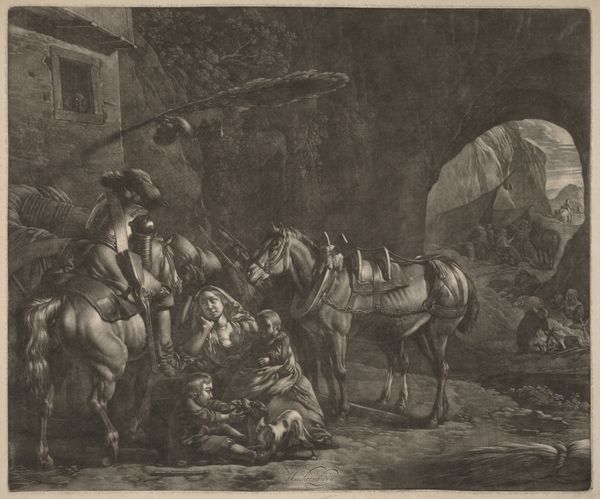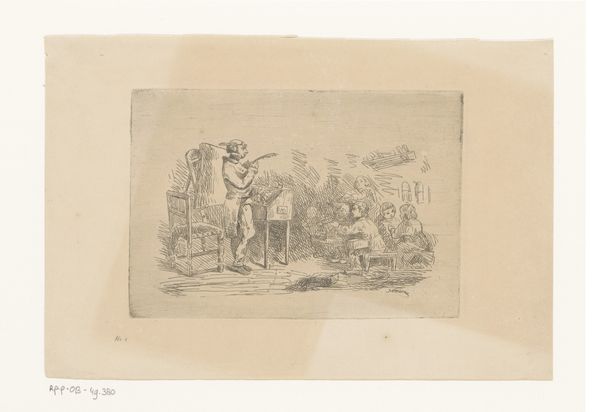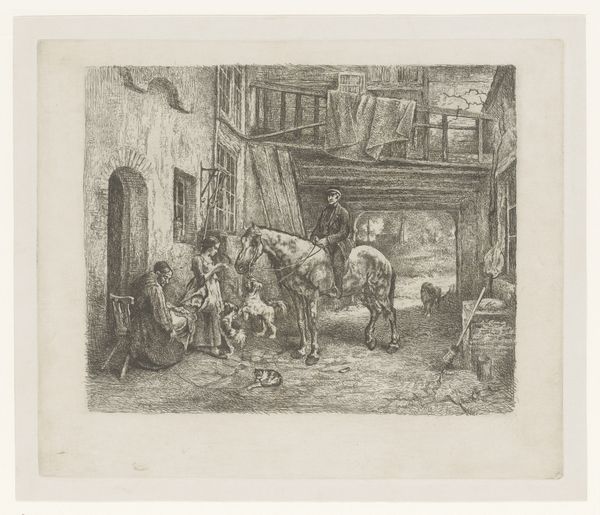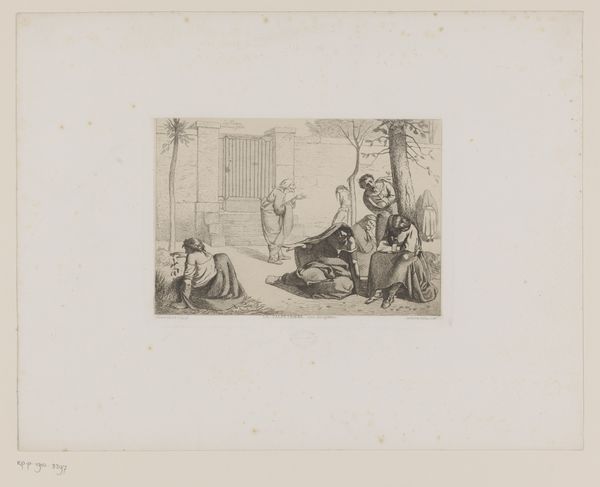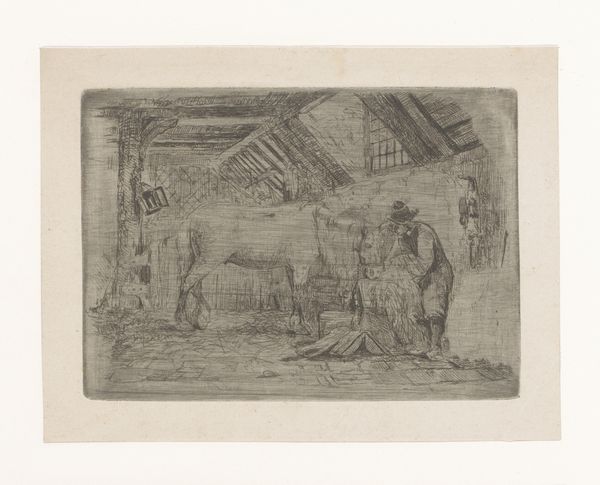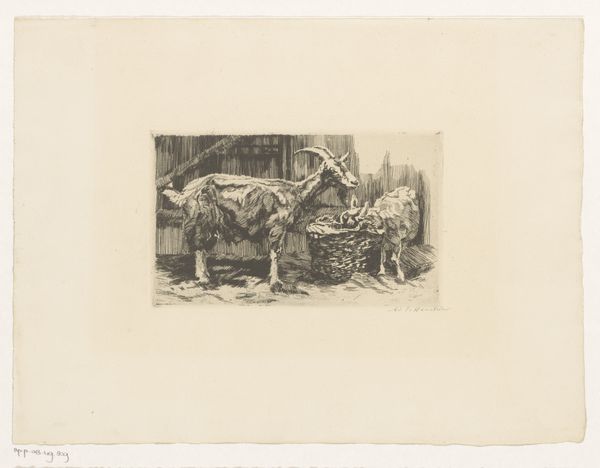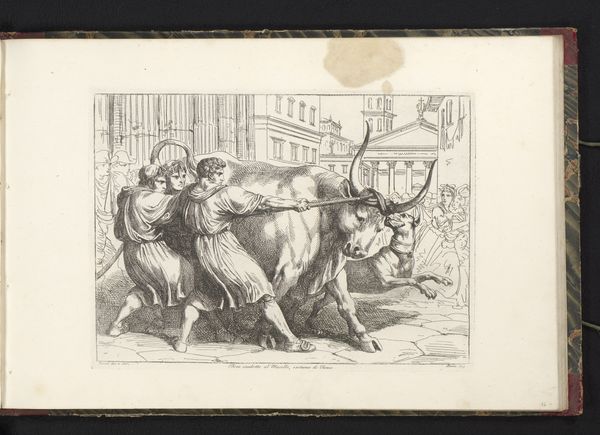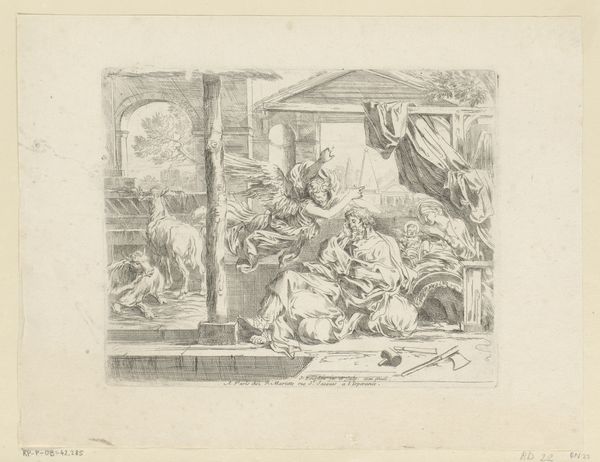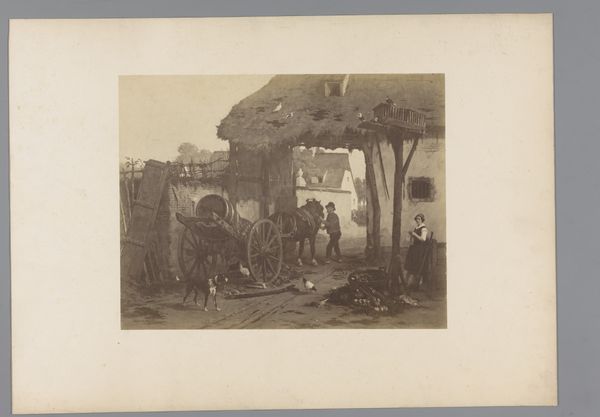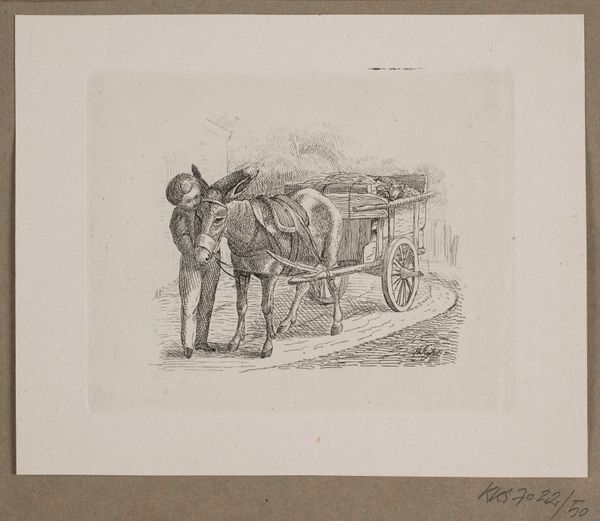
Man en een vrouw met een paard en twee honden bij een pleisterplaats 1825 - 1900
0:00
0:00
Dimensions: height 108 mm, width 172 mm
Copyright: Rijks Museum: Open Domain
Curator: Let's turn our attention to "Man en een vrouw met een paard en twee honden bij een pleisterplaats," which roughly translates to "Man and a woman with a horse and two dogs at a resting place". This engraving, created sometime between 1825 and 1900 by Johann Wilhelm Baumann, presents a wonderfully intimate domestic scene. Editor: It strikes me as profoundly peaceful, almost dreamlike. The muted tones, the way everyone seems to be languidly at rest...even the landscape beyond seems to exhale a sigh of contentment. What's going on here, exactly? Curator: Baumann has captured a quintessential genre scene, focusing on the everyday lives of ordinary people. Genre painting gained significant traction in the 19th century as a means of expressing national identity, cultural values, and… essentially… to glorify daily life. Editor: It feels more humanistic than glorious, somehow. Look at the patient way the woman is offering something to the horse, the relaxed dogs… They feel like members of the family, sharing the quiet intimacy of this moment. Does it play with Baroque artistic elements? Curator: Precisely, you can notice the baroque style of composition using strong light to highlight focal areas while leaving others darkened with complex scenery that adds depth. Baumann expertly uses engraving to create depth and texture, enhancing that sense of serenity and slowing down our gaze to consider each element more intently. It's a slice of life rendered with genuine affection, I believe. Editor: The landscape melts into the background… it suggests freedom but it keeps us within the immediacy of the interior. The scene almost creates its own gravity, if you catch my drift… Curator: The art pieces from that time aimed at fostering a connection with the immediate environment and finding beauty and lessons in the mundane aspects of everyday existence, and you got it right on the first go. The purpose behind these kinds of works had profound political undertones back in the day and was often used in political statements and/or artistic resistance in order to foster values and create a sense of solidarity within nations going through various different turmoils. Editor: Wow, never thought all that meaning was behind some pets at a rest stop. I guess these dogs had to mean more back then. So much hidden beauty... or defiance in an otherwise mundane snapshot.
Comments
No comments
Be the first to comment and join the conversation on the ultimate creative platform.
